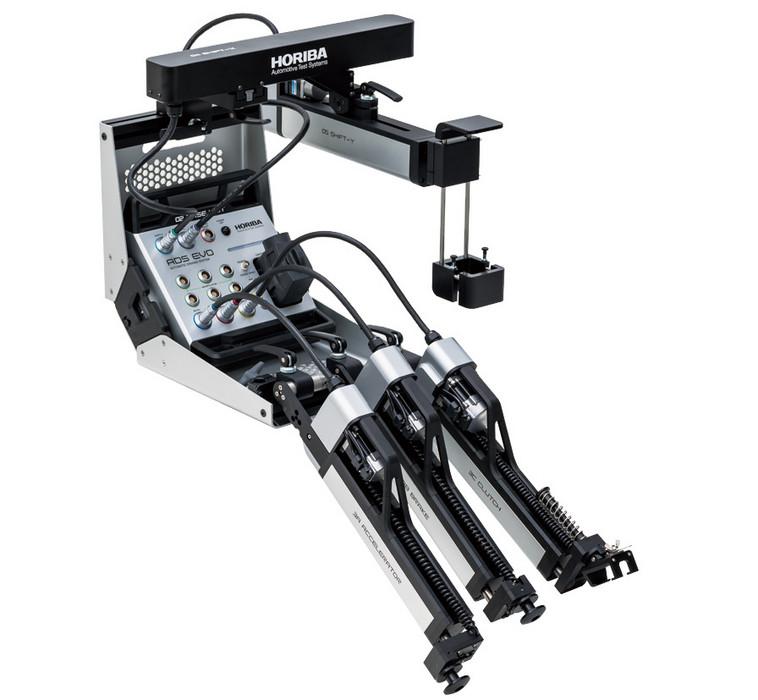

The automotive industry is undergoing a major shift with the rapid expansion of the global Electric Vehicle (EV) market. This growth has introduced new challenges in EV testing, including increasing test complexity and time consumption. As the demand for efficient testing rises, driving robots are emerging as a key solution to improve accuracy and reduce test failures.
Finding qualified personnel to conduct complex tests is another challenge the industry faces. This has pushed many companies to explore driving robots as a reliable solution for streamlining EV testing processes.
We explore the current state of EV testing, the challenges involved, and how robot drivers like HORIBA's ADS EVO can revolutionize testing efficiency.
Compared to standardized internal combustion engine (ICE) tests, EV testing is much longer and more complex, requiring precise, repeatable results over extended periods. This introduces new challenges, including test failures and safety risks. Driving robots, like our ADS EVO, are gaining attention as they address these issues by eliminating human fatigue and the variability associated with long test cycles.
Robot drivers offer safe, consistent, and precise automation for EV tests, especially when tests need to be repeated over long durations. As EV adoption increases, the variety and volume of tests needed will grow significantly. The ability to automate these tests with robot drivers will be key to maintaining efficiency and reducing errors.
The increasing complexity of EV testing has introduced several challenges. Here's how robot drivers can address them:
Challenge 1: Health, Safety, and Performance of Human Drivers
EV testing often requires long evaluation times, which can cause fatigue and introduce health risks for human drivers. Prolonged exposure to extreme environments, such as high or low temperatures, further burdens human operators. Fatigue not only impacts health but also reduces the accuracy and consistency of test results. Robot drivers provide a reliable, fatigue-free solution, ensuring tests are conducted safely and consistently without the risk of human error.
Challenge 2: Longer Testing Times Reduce Efficiency
Tests like cruising range evaluation and battery degradation evaluation take extended periods, which impacts overall test facility efficiency. Robot drivers can run tests continuously, improving throughput and reducing the total time needed to complete evaluations.
Challenge 3: Diverse and Increasing Evaluation Scenarios
As the EV market expands, testing must accommodate a wide range of real-world driving scenarios. This includes replicating road surface gradients and various driving conditions. Accurate reproduction of these conditions requires both environmental replication and skilled driving over long test cycles. Robot drivers excel at repeating complex and diverse test scenarios with high precision, reducing variability and ensuring consistency in results.
 The ADS EVO automatic driving system is designed to overcome the key challenges in EV testing, offering tailored solutions that streamline and optimize the testing process.
The ADS EVO automatic driving system is designed to overcome the key challenges in EV testing, offering tailored solutions that streamline and optimize the testing process.
Solution 1: Automating Long Test Cycles
The ADS EVO allows for full automation of lengthy EV testing processes, significantly reducing test times and improving overall efficiency.
Solution 2: Handling Environmental Resistance Testing
The ADS EVO can operate within a wide temperature range from -40°C to 80°C, ensuring reliable performance in extreme conditions and delivering consistent, accurate test results.
Solution 3: Supporting Diverse Evaluation Scenarios
Whether simulating real-world driving conditions or replicating a variety of skilled driving techniques, the ADS EVO provides high reproducibility across various testing scenarios, ensuring comprehensive EV testing.
As the EV market continues to grow, so do the challenges of testing these vehicles efficiently and accurately. Driving robots like the ADS EVO are paving the way for smarter, more efficient EV testing, helping manufacturers save time, reduce costs, and ensure the highest levels of accuracy.
With the use of advanced automatic driving systems, companies can streamline their testing operations, meet the demands of the growing EV market, and ensure the highest standards of safety and performance for their electric vehicles.
The global Electric Vehicle (EV) market is experiencing unprecedented growth. According to the International Energy Agency (IEA, 2024), 14 million EVs were sold worldwide in 2023, increasing the total number of EVs on the road to 40 million. This reflects a 35% increase in sales from the previous year.
As the market continues to grow, projections indicate that the global stock of EVs will grow from 40 million in 2023 to 250 million by 2030 and 525 million by 2035. EV sales expected to account for over 50% of total vehicle sales by 2035, the demand for rigorous and efficient EV testing is greater than ever.
HORIBA제품의 자세한 정보를 원하시면, 아래의 양식에 내용을 입력을 부탁드립니다.
